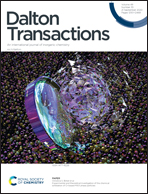NiMOF-derived oxygen vacancy rich NiO with excellent capacitance and ORR/OER activities as a cathode material for Zn-based hybrid batteries†
Abstract
An Ni–Zn battery is a distinguished member in the family of closed Zn-based batteries due to its ideal power density and voltage. However, when it is employed as a power supply for electric vehicles, its defects in terms of specific capacitance and energy density become obvious. Herein, to resolve this problem, a hybrid battery system was created through a combination of Ni–Zn and Zn–air batteries at the cell level. In a hybrid battery system, oxygen vacancy rich NiO with S,N co-modified mesoporous carbon as a matrix was used as the cathode material. This cathode material showed a high specific capacitance of 202.1 mA h g−1 at 1.0 A g−1. When the current density reduces to 20 A g−1, this value decreases to 130.2 mA h g−1, which implies that 64.4% of specific capacitance was retained. It also exhibits excellent OER and ORR activities. For the hybrid battery system, when the discharge process was carried out at 1 mA cm−2, there were two voltage plateaus at 1.72 and 1.12 V, which originated from Ni–Zn and Zn–air, respectively. In this case, its specific capacitance and energy density reaches 800.3 mA h g−1 and 961 W h kg−1, respectively. The hybrid battery also possesses perfect stability during multi-cycle charge–discharge tests. The construction of this hybrid battery system develops a new road to prepare a power supply device with high performance.



 Please wait while we load your content...
Please wait while we load your content...